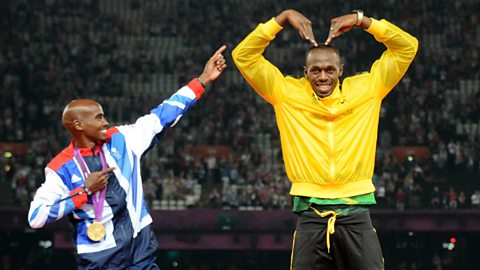Definitions and descriptions of the principles of training
The principles of training should be thought of as the 'golden rules' of making fitnessThe ability to meet the demands of the environment. training work for the individual participant. Following these golden rules will help to guarantee success and will carry athletes towards their training and performance goals. All training is aimed at creating long-term physical changes in the body systems. These changes are referred to as adaptationA feature of an organism's body which helps it to survive..
An athlete demonstrates the different regimes she follows to keep fit
Specificity - training must be relevant to the individual and their sport. This can be achieved by tailoring training specifically for the sport or even the position that the individual plays, the muscle groups that they use the most or the dominant energy system of the athlete. For example, a 100 m sprinter is likely to train very differently to a 10 km racer despite them both being track athletes. The sprinter will focus on speed and power while the distance runner will train for cardiovascular fitness and the ability to work at high intensity aerobically.

Overload - training needs to work the body harder than normal so there is some stress and discomfort. This makes the body systems respond by adapting to the stress placed on them. Applying the overload principle to training means that performance will improve - no overload, no improvement. Overload can be achieved by using FITT (see below).
Progression - training should progressively become more difficult. Once the body has adapted, the performer should make further demands on the systems. However, increases must be gradual so that the athlete avoids a plateau in performance or, worse, injury.
Reversibility - if training stops, then the fitness gained will be largely lost. The body systems reverse or de-adapt and performance deteriorates if training is significantly reduced, decreases in intensity or injury prevents training from taking place for any length of time. It is essential to avoid breaks in training and to maintain the motivateTo raise the level of determination to succeed. of the athlete.
Rest and recovery - physical adaptations occur during the recovery and non-active period of the training cycle. Therefore athletes and trainers must achieve the right amount of rest between sessions, good sleep patterns and the right nutrition, including the use of proteinOrganic compound made up of amino acid molecules. One of the three main food groups, proteins are needed by the body for cell growth and repair., to help repair the damage caused by intense training.
Optimising training
Overload and progression can be applied to training using the FITT principle.
- F = Frequency
- I = Intensity
- T = Time
- T = Type
Frequency is how often you train, for example, three times a week. Frequency is increased by training a greater number of times each week.
Intensity is how hard you train, for example faster, heavier, less recovery. Intensity is increased by lifting a greater resistance, such as with weight training, or by training at a higher percentage of maximum heart rate (maxHR). This can be done either as continuous or interval training.
Time is how long you train for, for example a 30 minute session. Time can be manipulated by training for longer or by completing a greater number of sets or repetitions (also known as reps).
Type of training is what kind of training you do, for example interval, fartlek or continuous. Type is manipulated by offering a variety of training types and experiences to the athlete by combining training methods.
Training frequency, intensity, time or type must be increased over the training period to ensure that the body is pushed beyond its normal workload.